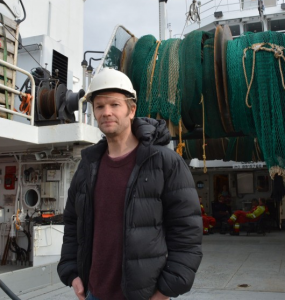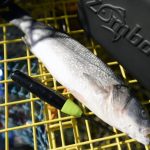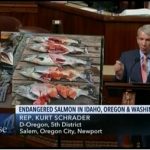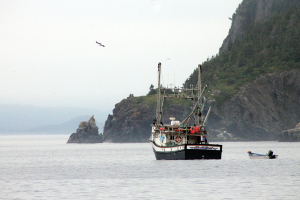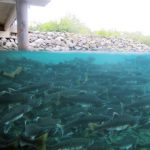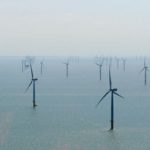Tag Archives: capelin
Newfoundland capelin out of ‘critical zone,’ but not because there are more fish
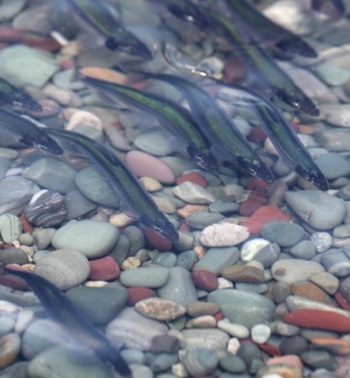 Scientists say they no longer consider the capelin off Newfoundland’s east coast to be in the critical zone, but it’s not because there are more fish. Federal Fisheries Department scientists say they’ve adjusted the benchmark for the critical zone designation, which is used for fish stocks struggling to recover. The adjustment follows a similar decision last year to adjust the critical zone benchmark for the region’s cod stocks. The shimmery sardine-sized pelagic fish are an important food source for cod, and scientists say the coinciding adjustments reflect cod’s dependence on capelin. more, >>click ti read<< 18:55
Scientists say they no longer consider the capelin off Newfoundland’s east coast to be in the critical zone, but it’s not because there are more fish. Federal Fisheries Department scientists say they’ve adjusted the benchmark for the critical zone designation, which is used for fish stocks struggling to recover. The adjustment follows a similar decision last year to adjust the critical zone benchmark for the region’s cod stocks. The shimmery sardine-sized pelagic fish are an important food source for cod, and scientists say the coinciding adjustments reflect cod’s dependence on capelin. more, >>click ti read<< 18:55
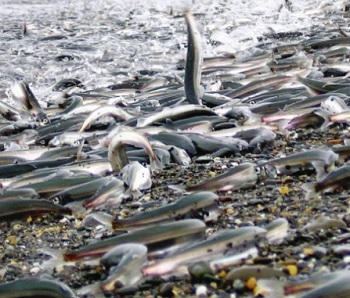
Mothers Day: A salute to marine mothers, from lobsters to octopus
What makes the she lobster so contemporary is that she goes looking for her mate by tapping and poking the tips of her claws into the male abode, and if she finds the lucky catch, she enters, whereupon the male taps his claws as a welcoming gesture (she hopes). This behaviour is known as “boxing.” It is thought the future husband actually taps her to get a sense of the hardness of her shell and when she may molt, because when she does, the matrimonial action occurs! She will then lie on her back while the male performs his magnificent gesture. >click to read< 12:01
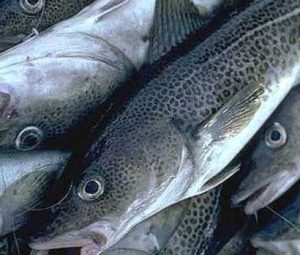
How Newfoundland’s wild fisheries have gone from plentiful to pitiful – How did we get here?
The headline in the daily paper at the end of January 2019 had said it all: Cod recovery still far off: DFO. In the case of cod, the same factors that had contributed to a hopeful comeback — thriving capelin and warming waters — had since swung in unfavourable directions. Fewer capelin prey and changing environmental conditions did not bode well for cod. Now, in 2021, the prognosis for the cod population, capelin and the environmental 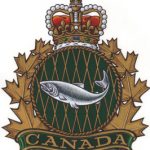 conditions remains no better. How did we get here? DFO science shows several factors are predominantly to blame for declining cod and capelin populations, including: natural causes, especially lack of capelin prey in the case of cod; high predation, particularly from fish (more so than seals), in the case of capelin; and warming ocean waters, among other environmental factors. >click to read< 08:26
conditions remains no better. How did we get here? DFO science shows several factors are predominantly to blame for declining cod and capelin populations, including: natural causes, especially lack of capelin prey in the case of cod; high predation, particularly from fish (more so than seals), in the case of capelin; and warming ocean waters, among other environmental factors. >click to read< 08:26

Due to abundance of capelin this summer, harvester and union director hope for improved science
With capelin flooding the beaches and nets of harvesters in numbers not seen in years, the abundance and quality of the species is turning heads across the province. Fixed gear harvester Dennis Chaulk had three days fishing capelin in Bonavista Bay from July 23-25. Like the capelin fishers in the Notre Dame Bay region of central Newfoundland, Chaulk witnessed a successful and plentiful fishery. ,, But now that harvesters and buyers across the province are saying it’s the best quality and population of capelin seen in over two decades, Broderick says this summer’s capelin fishery has shown that the science available on capelin is far from accurate and needs to be seriously scrutinized. >click to read<17:58
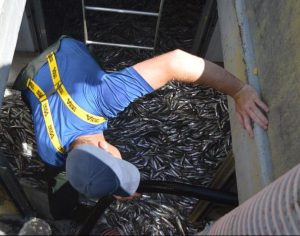
First two days of capelin fishery around Twillingate proving successful
By noon on July 30 the wharf outside Notre Dame Seafoods plant in Twillingate had piled up with long liners, delivery trucks and forklifts. Since Sunday, July 29, the capelin fishery around the shores of Notre Dame Bay has proved to be a successful year for harvesters in the area. It’s a complete 180 from last year’s capelin fishery, which was met with scarce signs and unachieved quotas. For fisherman Nelson Rideout, his 35,000 pound daily quota was achieved with one shot of the fishing gear into the water early Monday morning, June 30. >click to read<13:13
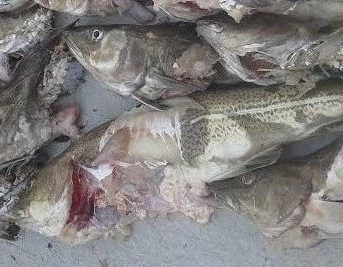
Could a seal cull help cod recover? It’s not so simple, scientist says
The equation seems simple: seals eat fish, fish are declining, kill the seals, fish recover. But experts warn that many factors need to be considered before drastic measures are taken. With talk revived about ending the recreational fishery, some believe a seal would be a more effective way to help cod stocks recover. But is a cull the answer to our fish stock problem? (HELL YEAH!) Eldred Woodford of the Canadian Sealers Association is taking an even stronger stance, and calling for an all-out seal cull.,, Alejandro Buren, a research scientist at the Department of Fisheries and Oceans, says many factors are at play when looking at food web relationships. >click to read<20:28

Enviro group concerned about decline in capelin abundance in N.L.
A national conservation organization is expressing concerns about what it says is a 70 per cent decline in capelin abundance over the last two years in Newfoundland and Labrador. A news release from WWF Canada says that while environmental factors are driving the decline, it cannot rule out fishing as another factor. It says due to limitations with its surveys, the Fisheries Department cannot accurately estimate the total number of capelin in the water, and therefore cannot conclude with certainty the impact fishing has had on the stock. >click to read<11:23
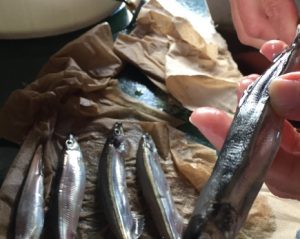
Capelin decline 70 per cent but scientists not worried
Scientists with the federal Department of Fisheries and Oceans found a lot fewer capelin last year during their survey of the stock — a decline of 70 per cent from the last count, done in 2015. Scientists blame late spawning for the population drop. Once the capelin larvae hatch they need tiny copepods for food, and if they hatch after the copepod population spikes, then fewer larvae will survive.,,, Last year about 20,000 tonnes of capelin were fished commercially, but scientists at DFO said fishing has little impact on the decline.,, >click to read< 16:42
Poor outlook for caplin this year: DFO – Caplin fishery does not negatively affect caplin abundance, scientist says, >click to read< 21:03
Capelin count: DFO spending $2.4M to study fishery ‘linchpin’
 The Department of Fisheries and Oceans is spending more time and money on understanding why capelin stocks haven’t recovered. “Capelin are a linchpin; that’s the simplest I can put it. If you don’t have a lot of capelin, you don’t have a lot of other stuff,” senior researcher Pierre Pepin told reporters at a department briefing. Pepin said the success of other species depends on a healthy capelin population.,, It wasn’t just cod that collapsed in the early ’90s. Capelin stocks peaked at around six million tonnes before collapsing to next to nothing. Recent surveys show a small recovery to about one million tonnes. Scientists don’t know what caused the collapse, but it came during a period of very cold ocean temperatures. click here to read the story 09:30
The Department of Fisheries and Oceans is spending more time and money on understanding why capelin stocks haven’t recovered. “Capelin are a linchpin; that’s the simplest I can put it. If you don’t have a lot of capelin, you don’t have a lot of other stuff,” senior researcher Pierre Pepin told reporters at a department briefing. Pepin said the success of other species depends on a healthy capelin population.,, It wasn’t just cod that collapsed in the early ’90s. Capelin stocks peaked at around six million tonnes before collapsing to next to nothing. Recent surveys show a small recovery to about one million tonnes. Scientists don’t know what caused the collapse, but it came during a period of very cold ocean temperatures. click here to read the story 09:30
Kinky capelin fish clog traffic in Newfoundland
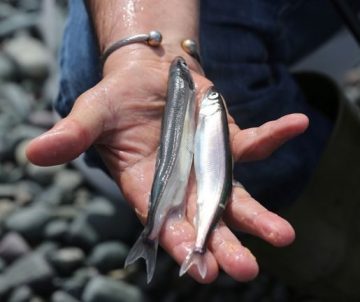 ST. JOHN’S, N.L. — In eastern Newfoundland, nothing clogs traffic like kinky sex on the beach. On any given day for the past week or so, hundreds of people have been parking indiscriminately near a small town north of St. John’s to get to the annual “capelin roll” — a sometimes spectacular event that is as unusual as it is unpredictable. When the tide is high and conditions are just right, tens of thousands of the small, silvery fish start washing ashore on two rocky beaches to spawn, often in a wriggling, writhing mass that can seem biblical in proportions. The orgy ends when the males die. “For someone who has never seen it, it’s quite phenomenal,” said John Kennedy, mayor of Logy Bay-Middle Cove-Outer Cove. But most of the people who show up at the beaches at Middle Cove and Outer Cove aren’t there just to gawk. For centuries, locals have been coming to these beaches — and to several other, more-secluded spots around the province — to scoop up the fish and bring them home to eat. Read the rest here 11:15
ST. JOHN’S, N.L. — In eastern Newfoundland, nothing clogs traffic like kinky sex on the beach. On any given day for the past week or so, hundreds of people have been parking indiscriminately near a small town north of St. John’s to get to the annual “capelin roll” — a sometimes spectacular event that is as unusual as it is unpredictable. When the tide is high and conditions are just right, tens of thousands of the small, silvery fish start washing ashore on two rocky beaches to spawn, often in a wriggling, writhing mass that can seem biblical in proportions. The orgy ends when the males die. “For someone who has never seen it, it’s quite phenomenal,” said John Kennedy, mayor of Logy Bay-Middle Cove-Outer Cove. But most of the people who show up at the beaches at Middle Cove and Outer Cove aren’t there just to gawk. For centuries, locals have been coming to these beaches — and to several other, more-secluded spots around the province — to scoop up the fish and bring them home to eat. Read the rest here 11:15
Scientists study capelin reproduction cycles in Trinity Bay
 Researchers are keeping a close eye on how capelin are spawning and developing off the waters of Newfoundland. Scientists have flocked to Bellevue Beach in Trinity Bay — one of the most important capelin spawning areas in the province — to find out why the fish are thriving in these waters. Read more here 10:14
Researchers are keeping a close eye on how capelin are spawning and developing off the waters of Newfoundland. Scientists have flocked to Bellevue Beach in Trinity Bay — one of the most important capelin spawning areas in the province — to find out why the fish are thriving in these waters. Read more here 10:14






